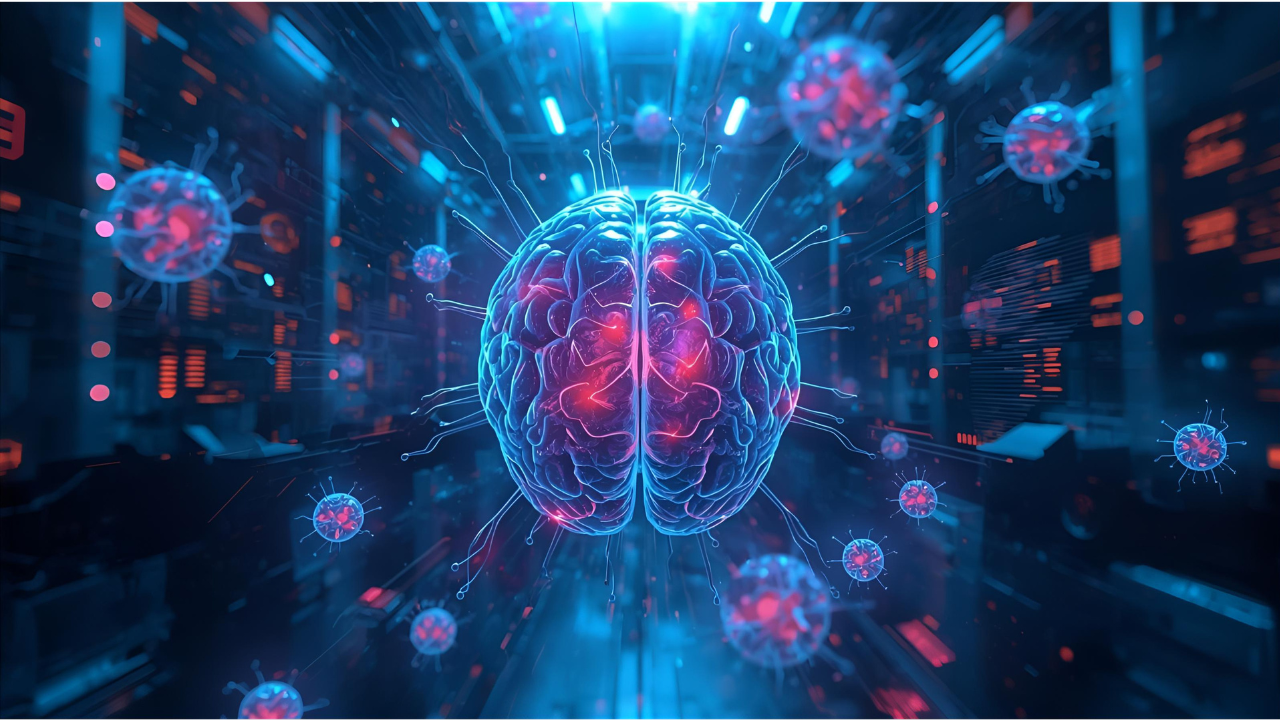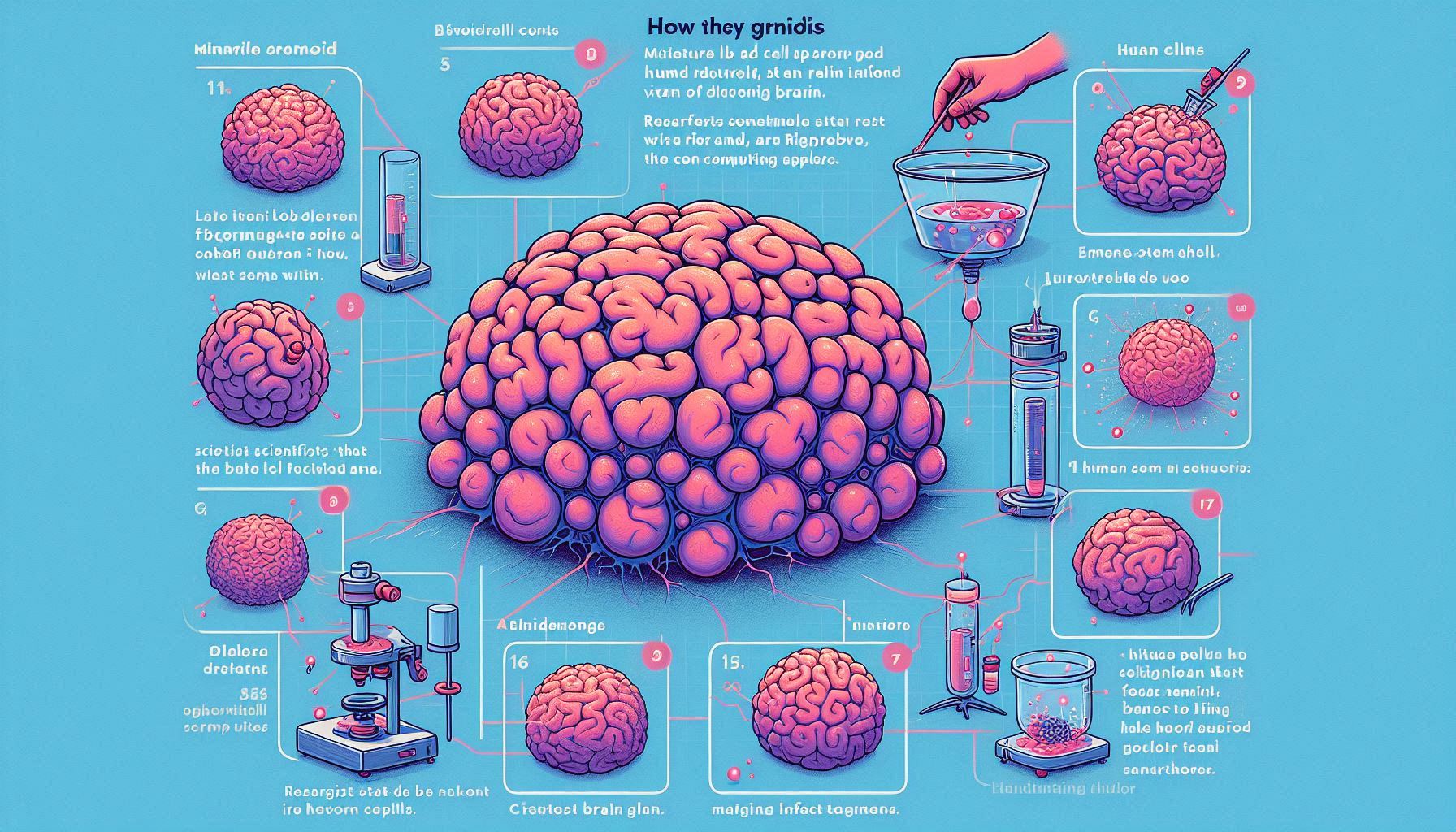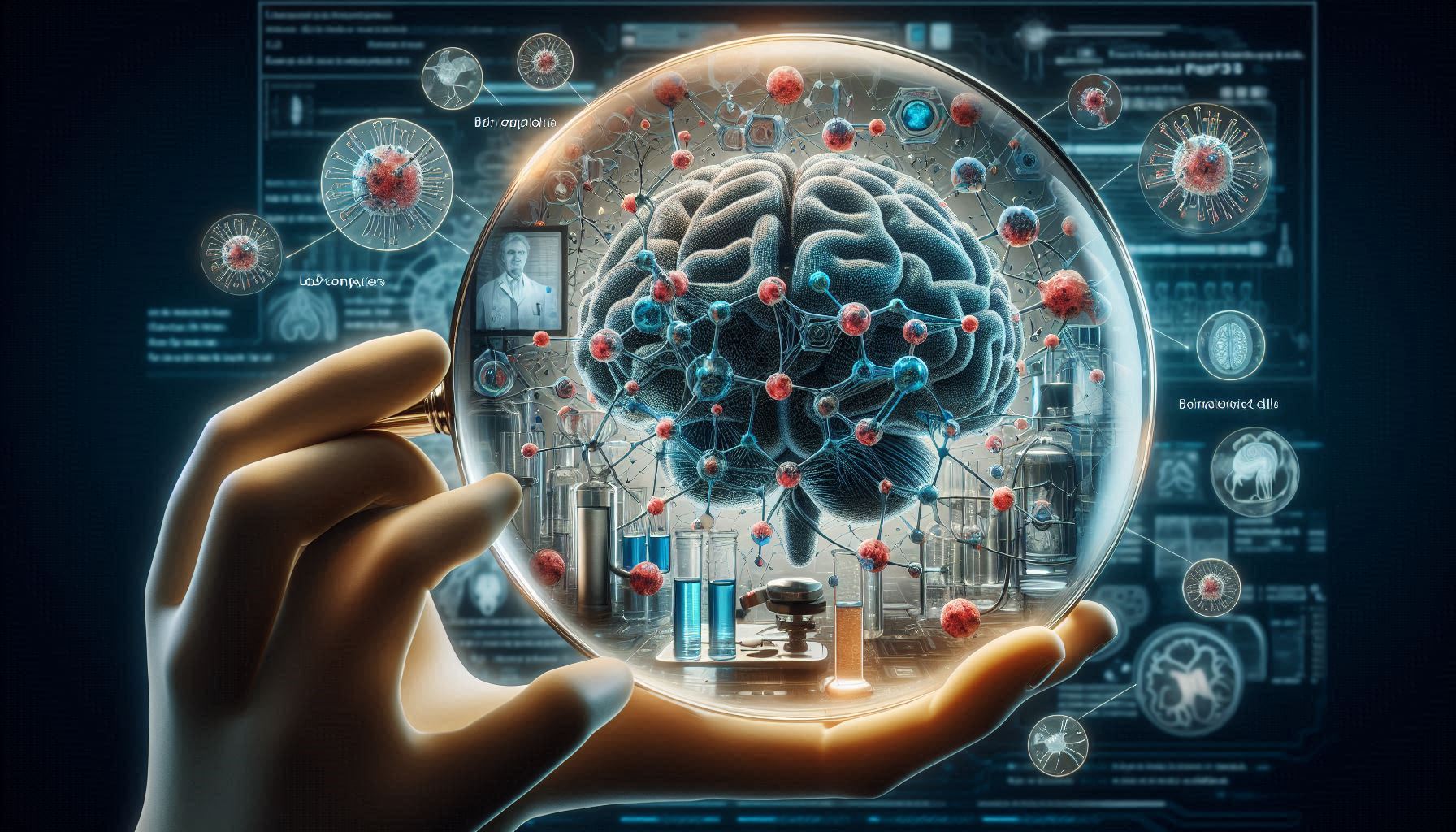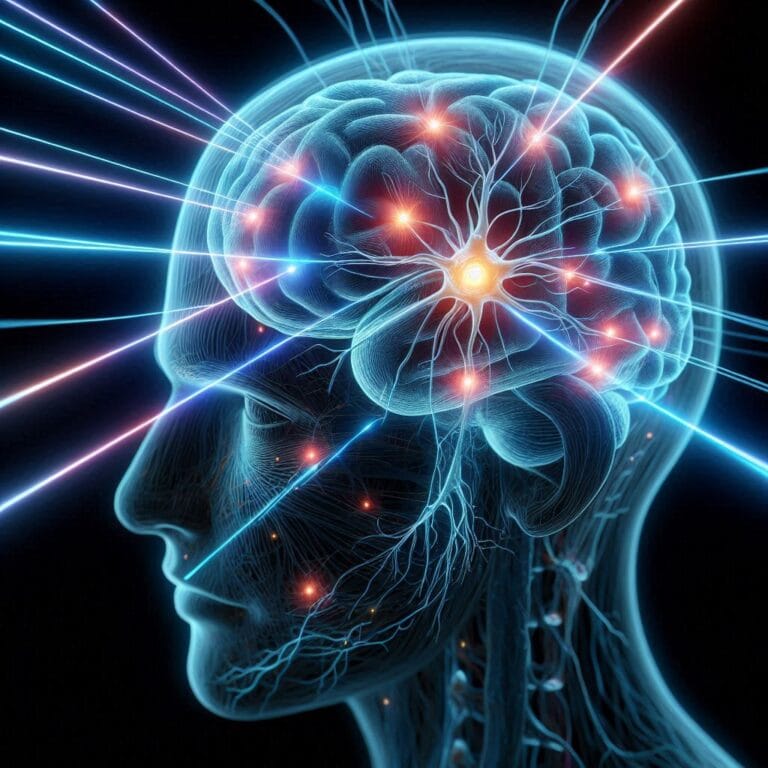Introduction: The Dawn of a New Type of Computing
Computers have evolved dramatically — from vacuum tubes to microchips, from simple automation to artificial intelligence (AI). Now, a new frontier is emerging: organoid intelligence (OI).
Organoid intelligence is the idea of using lab-grown human brain cells to build biocomputers that think and process information differently from today’s machines. Unlike silicon chips, which rely on fixed circuits, biocomputers powered by Brain organoid technology could adapt, learn, and recognize patterns in ways that traditional AI cannot.

The excitement around this technology comes from its potential to revolutionize computing. By merging biology with technology, scientists believe synthetic human brain cells can create machines that are far more energy-efficient and powerful than anything built with silicon.
For students, studying Brain organoid technology provides exposure to cutting-edge fields like neuroscience, biotechnology, and computing. For researchers, it offers a chance to explore biocomputers that could accelerate medical discoveries. And for the tech industry, OI might be the stepping stone toward the next generation of computing.
What Are Brain Organoids?
To understand Mini-brain computing, we need to know what brain organoids are and why they matter in the context of a brain organoids computer.
Definition
Brain organoids are miniature lab-grown human brain cells arranged in 3D clusters that resemble simplified versions of a developing brain. Scientists sometimes refer to them as “mini-brains.” These lab-grown human brain cells can form neural networks, fire electrical signals, and even respond to stimuli — all features that make them suitable for research and potential computing applications.

How They Are Made
- Researchers start with stem cells that have the ability to become different cell types.
- With the right nutrients and signals, these stem cells are guided to form neural cells.
- Over time, these cells grow into organized clusters, creating brain organoids that mimic aspects of brain structure.
This makes them ideal models for exploring both medical research and the possibility of building a brain organoids computer.
Brain Organoids vs. Real Brain
- Scale: Human brains have ~86 billion neurons; brain organoids contain only a few million.
- Complexity: Real brains perform advanced functions like reasoning and memory, while lab-grown human brain cells in organoids can only simulate basic neural activity.
- Purpose: Unlike a conscious brain, brain organoids serve as experimental models for computing and medicine.
Despite being far less advanced than a real brain, a brain organoids computer shows how lab-grown human brain cells could one day become the foundation of organoid intelligence.
From Brain Organoids to Computers
The real breakthrough comes when brain organoids are not just grown in a dish, but connected to electronic systems. Scientists are experimenting with ways to link organoids to sensors, electrodes, and digital interfaces, essentially turning them into a brain organoids computer.
How It Works
- Electrodes are placed around or inside the organoid to record its neural activity.
- These signals are then translated into digital information, allowing the organoid to interact with a computer.
- The computer, in turn, can stimulate the organoid with electrical impulses, creating a feedback loop.
This setup transforms a cluster of lab-grown brain cells into a biological processor — a crucial step toward making real biocomputers.
Early Experiments
In recent studies, researchers have shown that brain organoids computers can:
- Recognize patterns in data.
- Control virtual environments.
- Even learn to play simple games like “Pong,” demonstrating that biocomputers can adapt through training.
The Biological CPU
Just as a silicon CPU executes instructions, a brain organoids computer has the potential to act as a “biological CPU.” While far less powerful than today’s supercomputers, these early biocomputers show that neural tissue can process information in fundamentally different — and more efficient — ways.
Organoid Intelligence (OI) Explained
If brain organoids are the hardware, then Brain organoid technology is the concept of using them for actual computing tasks. OI represents the fusion of biology and technology, where networks of lab-grown neurons are trained to solve problems just like computers.
Definition of OI
OI is the use of brain organoids as living processors, capable of storing information, learning, and responding to inputs. Unlike machine learning models, which require massive datasets, OI systems may be able to learn faster and adapt in real time.
AI vs OI
The biggest question today is AI vs OI — how does Mini-brain computing compare to artificial intelligence?
- AI runs on silicon chips and algorithms, excelling at pattern recognition but demanding enormous computational power and energy.
- OI, on the other hand, uses living brain cells that can form new neural connections naturally, just like human brains do.
- While AI is rigid and data-hungry, Brain organoid technology is flexible, adaptive, and energy-efficient.
Potential Capabilities of OI
- Faster learning: Unlike AI models that train on millions of examples, organoids could learn from fewer interactions.
- Lower energy use: A brain organoid the size of a pinhead consumes far less power than today’s data centers.
- Adaptability: OI could shift strategies on the fly, making Bioengineered computers much more resilient in unpredictable situations.
In short, it doesn’t replace AI but complements it, opening up a future where AI vs OI becomes less of a competition and more of a collaboration between silicon and biology.
Biocomputers: A New Era of Computing
For decades, computing has been dominated by silicon-based machines. But with the rise of Neural organoid systems, scientists are beginning to imagine a new class of machines: biocomputers.
What Are Biocomputers?
Biocomputers are systems that use living cells — including brain organoids — to process information. Unlike conventional computers, which operate through binary code and fixed circuits, it rely on the dynamic and adaptive nature of biological networks.
A brain organoids computer can function as the “hardware,” while biological activity forms the “software.” In this way, Bioengineered computers blur the line between life science and computer science.
How OI Fits Into Biocomputers
Organoid intelligence is one of the most promising paths toward creating practical Bioengineered computers. By connecting brain organoids to electrodes and digital systems, scientists can design machines capable of learning, adapting, and processing information more efficiently than silicon alone.
Advantages of Biocomputers
- Massive parallel processing: Neurons in a brain organoids computer fire simultaneously, allowing complex problems to be solved more naturally.
- Energy efficiency: Human brains consume ~20 watts of power — far less than supercomputers. Bioengineered computers could achieve similar efficiency.
- Potential for creativity: Biological systems are not limited by strict algorithms; Bioengineered computers may one day exhibit forms of problem-solving closer to human intuition.
In short, Bioengineered computers offer a glimpse of machines that think not like silicon chips, but like living brains.
AI vs OI: The Key Differences
One of the most exciting debates in science and technology today is AI vs OI — will artificial intelligence continue to dominate, or will Neural organoid systems create a new computing paradigm?
AI: Fast but Rigid
Artificial intelligence runs on silicon chips and is excellent at crunching huge datasets at incredible speeds. However, AI systems are rigid — they require enormous amounts of training data and struggle to adapt outside their programmed boundaries.
OI: Slower but Flexible
Organoid intelligence runs on living brain cells. A brain organoid may process information more slowly than a supercomputer, but it can adapt, learn, and rewire itself in ways AI cannot. This flexibility is what makes OI so revolutionary.
Comparison: AI vs OI
| Feature | AI (Artificial Intelligence) | OI (Organoid Intelligence) |
|---|---|---|
| Hardware | Silicon chips | Lab-grown brain organoids |
| Speed | Extremely fast | Slower, biological pace |
| Energy Use | High (data centers consume MWs) | Very low, like human brains |
| Adaptability | Limited, data-dependent | Highly flexible, learns quickly |
| Creativity | Algorithm-based | Potential for intuitive leaps |
The future is not about AI replacing OI, or vice versa. Instead, the real power lies in combining both. AI brings speed and scale, while OI brings adaptability and efficiency. Together, AI and OI could form hybrid systems that push computing to new horizons.
Challenges & Ethical Questions
While Brain organoid technology opens the door to revolutionary computing, it also raises profound ethical and technical challenges. At the center of these debates are the use of lab-grown human brain cells and the implications of treating them as computing hardware.
Ethical Concerns
Using synthetic human brain cells for research and technology sparks controversy. Some ethicists argue that while organoids are not conscious, the line between simulation and sentience must be carefully monitored. Could OI experiments ever cross into creating awareness? These are questions society must address before deploying OI at scale.
Technical Limits
- Size of organoids: Current synthetic human brain cells cluster into organoids that are only a few millimeters wide, far smaller than a real brain.
- Stability: Organoids are fragile and can degrade over time, making long-term experiments difficult.
- Reproducibility: Not all organoids grow the same way, creating inconsistencies that limit large-scale applications of OI.
Safety Concerns
Perhaps the biggest debate is whether lab-grown human brain cells could ever reach a state of self-awareness. While scientists believe this is unlikely today, as organoids lack the complexity of a full brain, the ethical question remains: If Brain organoid technology become more advanced, how do we ensure safety and responsibility?
Future Applications of Organoid Intelligence
Despite the challenges, the possibilities of Lab-grown brain computing are staggering. By harnessing the unique strengths of biology, scientists envision biocomputers that can solve problems beyond the reach of current technology.
Medical Research
Brain organoids allow scientists to study neurological diseases in ways traditional models cannot. Using Neural organoid systems, researchers could test new drugs on biocomputers made from patient-derived cells, predicting how individuals might respond before treatment begins.
Personalized Medicine
Imagine creating a model of your own brain from lab-grown cells. Doctors could then test therapies directly on your organoid, tailoring treatments with precision. This is where Neural organoid systems intersects directly with Bioengineered computers for life-saving outcomes.

Supercomputing Power
Conventional AI struggles with highly complex, dynamic problems — like predicting climate patterns or simulating ecosystems. Biocomputers built on organoid intelligence could tackle these tasks with greater efficiency, processing information in ways closer to human reasoning.
Hybrid AI + OI Systems
The most exciting vision is not replacing AI but combining it with OI. Hybrid systems could use AI’s raw speed alongside the adaptability of OI, creating Bioengineered computers that are faster, smarter, and more efficient than anything that exists today.
The “Butterfly Effect” of Organoid Intelligence
The concept of the butterfly effect—that a small action, like the flap of a butterfly’s wings, can trigger massive consequences—is a powerful analogy for understanding Neural organoid systems. Just as a butterfly can symbolize the beginning of a chain reaction, the creation of simple brain organoids trained for computation could set off a revolution in medicine, neuroscience, and computing.
Even the earliest experiments using OI show how something so small can create ripple effects across industries. For instance, organoids might start by helping researchers simulate disease models, but eventually, their applications could spread into supercomputing, ethical debates, and even redefining what intelligence means. Much like the butterfly’s wing, these small lab-grown systems could spark the next paradigm shift in human progress.
The idea of the butterfly is crucial here: today’s early prototypes of Lab-grown brain computing may look insignificant, but in the long run, they could be as transformative as the invention of electricity or the internet. The butterfly effect of Neural organoid systems suggests that we are standing at the edge of a scientific tipping point.
FAQ
What are brain organoids?
Brain organoids are miniature, lab-grown clusters of neurons that mimic certain features of the human brain. In the context of computing, they are being developed into a brain organoids computer that could surpass traditional silicon-based systems in adaptability and learning.
What is organoid intelligence (OI)?
Organoid intelligence refers to the use of brain organoids for computational purposes. By connecting these living neurons into circuits, scientists believe organoid intelligence could form the foundation of a new era of biocomputing.
How are biocomputers different from normal computers?
Biocomputers use living biological material, such as neurons or organoids, instead of silicon chips. Unlike traditional systems, biocomputers can process information in parallel, adapt to new conditions, and potentially learn in ways similar to the human brain.
AI vs OI – which is better?
AI (Artificial Intelligence) runs on traditional processors and relies on algorithms, while OI (Organoid Intelligence) uses living brain cells. Comparing AI vs OI, AI is currently more advanced, but OI holds potential for deeper adaptability and problem-solving, possibly outperforming AI in the future.
Are lab-grown human brain cells ethical to use in research?
The use of lab-grown human brain cells raises important ethical debates. While they provide groundbreaking opportunities for drug testing, disease modeling, and organoid intelligence research, concerns about consciousness, consent, and long-term implications remain unresolved.
Conclusion: The Road Ahead
Organoid intelligence (OI) is still in its infancy, but the progress so far signals a revolution unlike anything we’ve seen in computing. By using lab-grown brain organoids, researchers are building what might one day become the world’s first brain organoids computer—a system that doesn’t just calculate but learns, adapts, and evolves.
The road ahead is filled with both promise and uncertainty. Could the future computer actually be alive? If this technology continues to advance, we may soon find ourselves merging biological and digital frontiers, creating brain organoids computers that redefine problem-solving and even consciousness.
For students, researchers, and innovators, this is a field worth following closely. As organoid intelligence matures, it could influence not just computing power but also medicine, ethics, and how humanity understands intelligence itself. The journey of building a brain organoids computer has just begun—but its destination could change the world.
🔍 Want to dive deeper into brain-inspired technologies? Check out these fascinating reads:






